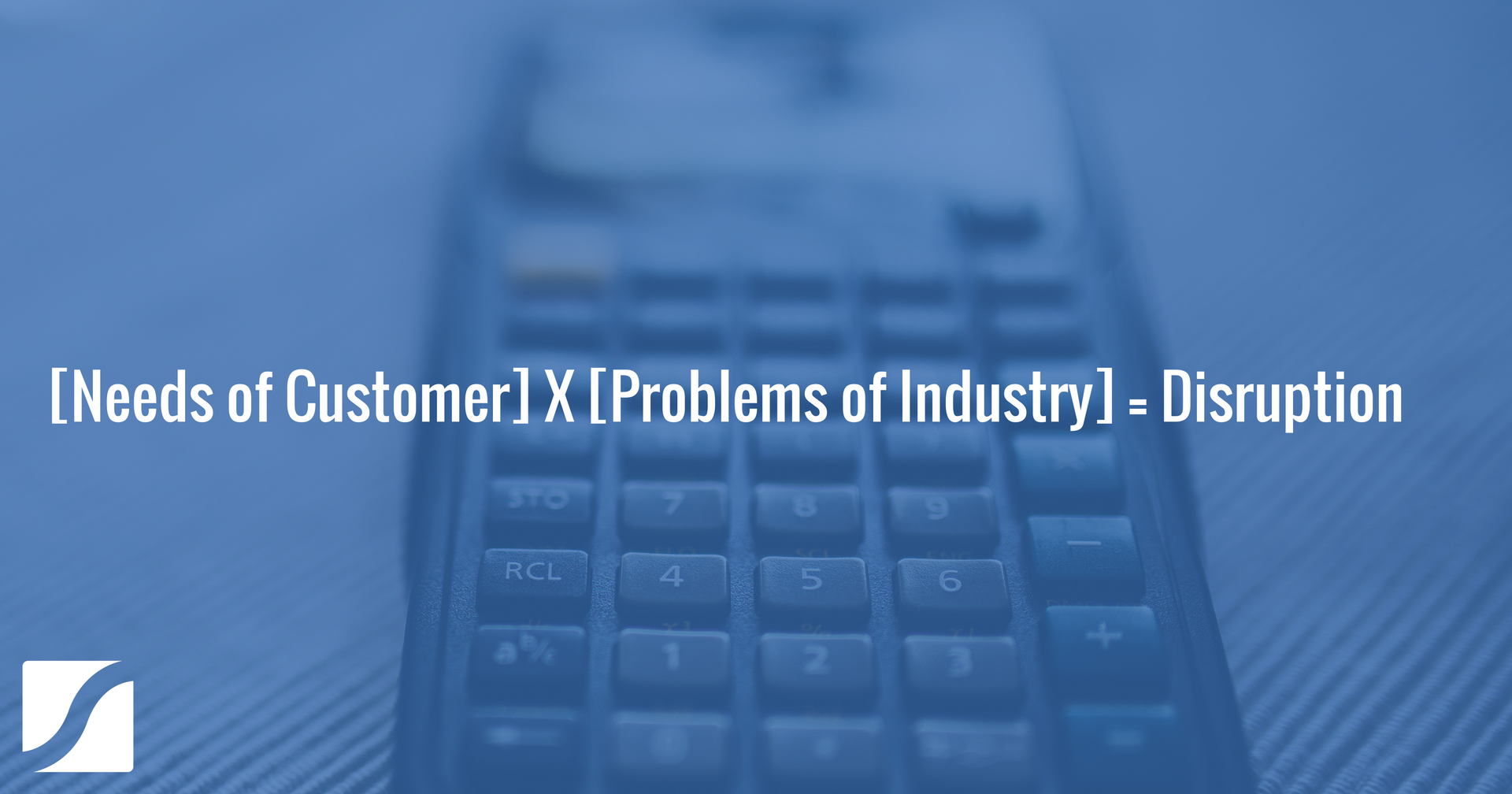A Four-Step Process To Disrupt Your Industry: Lessons from Alton Lane

If you consider businesses with true transformative effects that really disrupt their industry — think of Uber, Tesla, or AirBNB, for example — you’ll find they do the first, majorly important aspect of any business: they solve problems for the customer.
But then they go a major step beyond that, and they solve problems for the industry. Uber addresses the issue of too many cars, AirBNB of empty real estate going unused, and Tesla of fossil fuels.
Designing a business to solve industry problems, as well consumers’, leads to bigger, bolder, more innovative strategies. Consider men’s clothing retailer Alton Lane. Step into one of its stores and it’s immediately different: for one, the clothing retailer’s staff will first walk you to the bar to offer you a scotch or beer. You will then see a 360-degree body scanner waiting for you in the corner to capture your exact dimensions and ensure a perfect fit.
The six-year-old company, now with seven stores, has radically rethought the clothes-shopping experience. In fact, their digital tagline is “Welcome to the tailored apparel revolution.”
But the most disruptive elements of their business model happen behind the scenes and are driven by addressing industry problems as well as those of shoppers.
Colin Hunter hated shopping. A consultant at Bain & Co., he traveled all week long — and while he wanted to look sharp for clients, he dreaded the idea of wasting precious weekend time at a mall. So he teamed up with Peyton Jenkins, an investment banker, to rethink apparel retailing.
It occurred to them that the retail experience fundamentally was flawed. Most men hate shopping — and a decade or more ago, most retailers had given up on getting them to like it.
As a result, most retailers pushed toward a suite of supposedly innovative strategies including more intuitive websites, better ecommerce, cool apps, and virtual “try-on” technology. The goal was simple: to reduce the time men had to spend shopping.
Instead, Colin and Peyton had a simple idea: what if the shopping experience could be reimagined as something men would want to do on the weekend?
Colin has said often that “real innovation happens when you can meet the needs of the customer while solving the biggest problems of the industry.”
Or, in mathematical terms:
[Needs of Customer] X [Problems of Industry] = Disrupt Your Market.
This formula brings together two powerful strategic concepts:
- Innovations propagate only when they solve an unmet need. Netflix meets your need to watch what you want when you want. Xerox met the need of making copies without getting your hands dirty.
- Businesses disrupt industries when their business model solves a persistent industry problem. Uber solved the problem of hailing down and paying for taxis. Ford solved the problem of production costs, which had put most automobiles beyond the reach of the public. Tesla Motors is attempting to address the same problem with electric cars.
Either of these — solving a customer problem or an industry problem — are enough to build a business to disrupt the market.
But think about what happens when you do both.
Colin and Peyton set out on a year-long quest to understand two things:
- The top unmet customer needs
- The biggest industry problems
This wasn’t Googling or other forms of research. They each talked to hundreds of male customers about the shopping experience and their paths through it.
On the customer side, they came to three major problems:
- Fit: It takes too much time in the fitting room to find clothes that fit — and even then, it’s never just right.
- Value: Cheap clothes are low-quality, and high-quality clothes are over-priced. There was no sense of value for the money.
- Experience: Shopping isn’t fun. It’s chaotic, and it’s too much work. (Think about just the parking aspect alone.)
Remember, while we often become inundated with tasks and details, business is ultimately about solving problems that matter. Understanding what the problems were on the customer side, what could Alton Lane do?
- To address fit: They installed a system with technology capable of running 360-degree, full-body scans to capture exact dimensions.
- To address value: They sourced directly from high-quality fabric manufacturers, which has the effect of cutting out multiple middlemen (all of whom take a margin). Consumers, in turn, can be confident that they’re getting a fair price.
- To address experience: Free beer and scotch. In one store, there’s a secret button that, when pressed, opens to a poker table and satellite TV so you can watch a game with your friends. What would your weekend look like anyway? Why not come do that at Alton Lane?
Customer satisfaction and experience is paramount, but they still had to consider the issues with the industry as a whole. Notably:
- Inventory: If you nailed it on color/style, you ran out of inventory. If you whiffed, you had too much.
- Retail strategy: The best locations are, by definition, the most expensive to buy/rent.
- Staffing: It’s hard to match levels to demand. During a lunchtime or after-work rush, for example, there aren’t enough salespeople. At 3:30pm, it might feel uncomfortable to a shopper how many available salespeople there are.
What did they begin to do on the industry side?
- To address inventory: They used a similar model as Costco. Because Alton Lane buys directly from fabric manufacturers and can develop stronger relationships, it doesn’t pay for the fabric until it’s sold (Costco doesn’t pay vendors until goods are sold either). This eliminates massive inventory issues.
- To address retail strategy: They rent locations on the second floor of buildings, which are typically 1/10th the price of first floor locations (which obviously get better foot traffic). They take appointments online to reduce the need for foot traffic.
- To address staffing: By running on an appointment-only model, they essentially clear out the store for every customer. They also know exactly how many staff they need at any given time.
The ingenuity in this, aside from the individual solutions, comes from how many industries tend to think about competition. Namely, if competitors calculate that the cost of copying you is greater than the cost of letting you grow, they let you grow.
That said, Colin and his team are not waiting for the competition to wake up.
They are introducing new innovations like a mobile store (the “Alton Lane House Call”) that will visit your next BBQ, and a yacht that allows you to shop during a cruise on the Hudson, and they are using data and new technologies to further stretch their lead.
To build a business model that can disrupt the industry, consider the Alton Lane approach:
- Identify the biggest customer problems.
- Identify the biggest industry problems.
- Find disruptive solutions to each.
- Blend them into a business model competitors will find too costly to copy.
Want to learn more about Kaihan and his outthinker tactics? Check out his on-demand seminar on how to outthink your competition!



